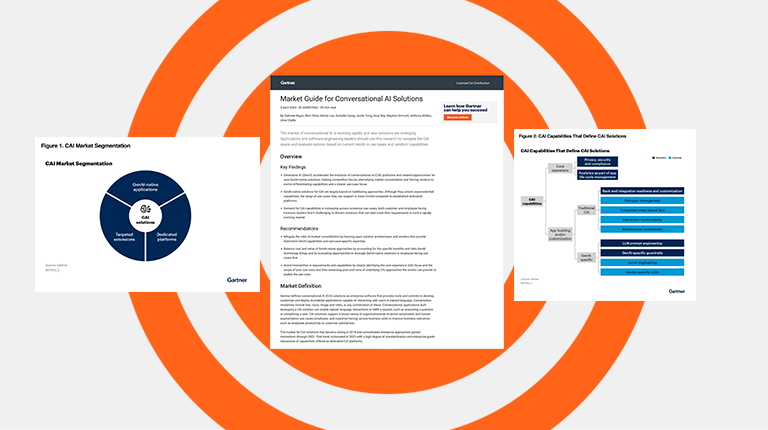Lately, it seems that every time you open your browser or casually scroll through a news feed, someone is writing about machine learning and its impact on both humans and the advancement of artificial intelligence. The importance of machines has been highlighted in articles covering everything from Virtual Assistant solutions to self-driving cars and robots that can perform the same tasks as humans. A number of large companies are defining machine learning as ‘the future’ – but what does that really mean?
What is Machine Learning?
Machine learning is nothing new. The history, in fact, dates back over sixty years to when Alan Turing created the ‘Turing test’ to determine whether a computer had real intelligence. It can be argued, however, that the past 25-30 years have seen the biggest leaps and bounds in terms of advances in speech technology. But I’m getting ahead of myself here.
Think of machine learning like this. As a human, and as a user of technology, you complete certain tasks that require you to make an important decision or classify something. For instance, when you read your inbox in the morning, you decide to mark that ‘Win a Free Cruise if You Click Here’ email as spam. How would a computer know to do the same thing? Machine learning is comprised of algorithms that teach computers to perform tasks that human beings do naturally on a daily basis.
The first attempts at artificial intelligence involved teaching a computer by writing a rule. If we wanted to teach a computer to make recommendations based on the weather, then we might write a rule that said: IF the weather is cloudy AND the chance of rainfall is greater than 50%, THEN suggest taking an umbrella. The problem with this approach used in traditional expert systems, however, is that we don’t know how much confidence to place on the rule. Is it right 50% of the time? More? Less?
For this reason, machine learning has evolved to mimic the pattern-matching that human brains perform. Today, algorithms teach computers to recognize features of an object. In these models, for example, a computer is shown an apple and told that it is an apple. The computer then uses that information to classify the various characteristics of an apple, building upon new information each time. At first, a computer might classify an apple as round, and build a model that states that if something is round, it’s an apple. Then later, when an orange is introduced, the computer learns that if something is round AND red, it’s an apple. Then a tomato is introduced, and so on and so forth. The computer must continually modify its model based on new information and assign a predictive value to each model, indicating the degree of confidence that an object is one thing over another. For example, yellow is a more predictive value for a banana than red is for an apple.
So Why is Everyone Talking about Machine Learning?
These basic algorithms for teaching a machine to complete tasks and classify like a human date back several decades. The difference between now and when the models were first invented is that the more information is fed into the algorithms, the more accurate they become. The past few decades have seen massive scalability of data and information, allowing for much more accurate predictions than were ever possible in the long history of machine learning.
New machine learning techniques in the field – that mostly involve combining pieces that already existed in the past – have enabled an extraordinary research effort in Deep Neural Networks (DNN). This has not been the result of a major breakthrough, but rather of much faster computers and thousands of researchers contributing incremental improvements. This has enabled researchers to expand what’s possible, to the point that machines are outperforming humans for difficult but narrowly defined tasks such as recognizing faces or playing the game of Go.
The Importance of Machine Learning
Machine learning has several very practical applications that drive the kind of real business results – such as time and money savings – that have the potential to dramatically impact the future of your organization. At Interactions in particular, we see tremendous machine learning impact occurring within the customer care industry, whereby machine learning is allowing people to get things done more quickly and efficiently. Through Virtual Assistant solutions, machine learning automates tasks that would otherwise need to be performed by a live agent – such as changing a password or checking an account balance. This frees up valuable agent time that can be used to focus on the kind of customer care that humans perform best: high touch, complicated decision-making that is not as easily handled by a machine. At Interactions, we further improve the process by eliminating the decision of whether a request should be sent to a human or a machine: unique Adaptive Understanding technology, the machine learns to be aware of its limitations, and bail out to humans when it has a low confidence in providing the correct solution.
Machine learning has made dramatic improvements in the past few years, but we are still very far from reaching human performance. Many times, the machine needs the assistance of human to complete its task. At Interactions, we have deployed Virtual Assistant solutions that seamlessly blend artificial with true human intelligence to deliver the highest level of accuracy and understanding.
Machine learning is transforming customer care, but the true potential lies in blending artificial intelligence with human capabilities. Discover how to strike the perfect balance to enhance efficiency and deliver exceptional customer experiences. Download our eBook to learn more!




